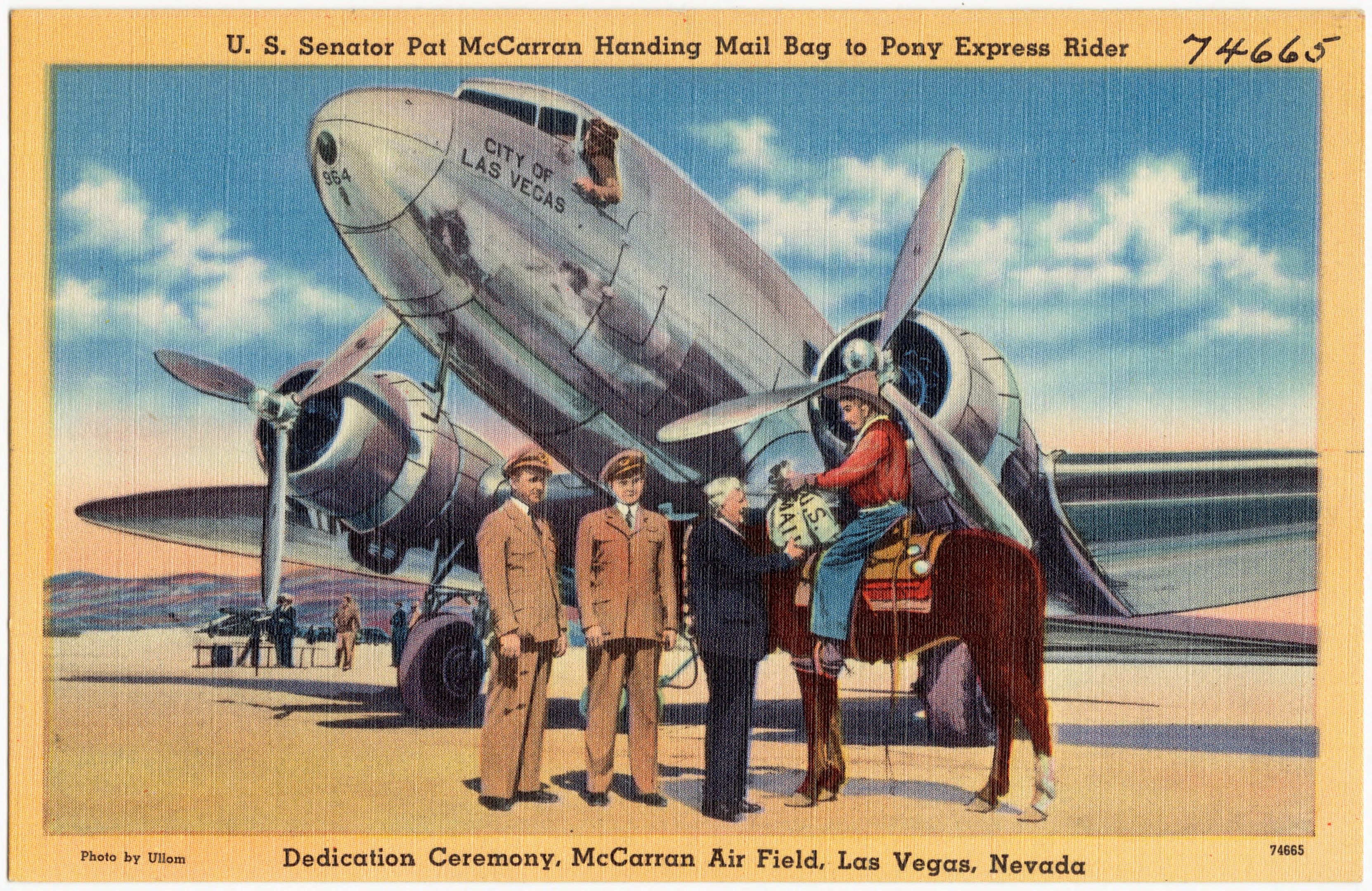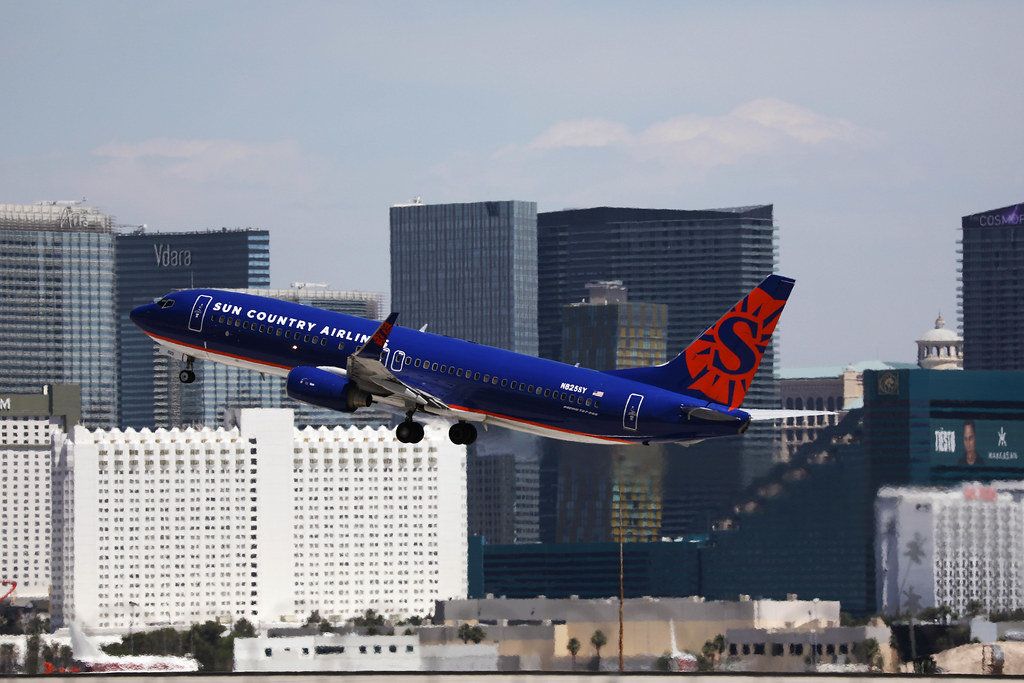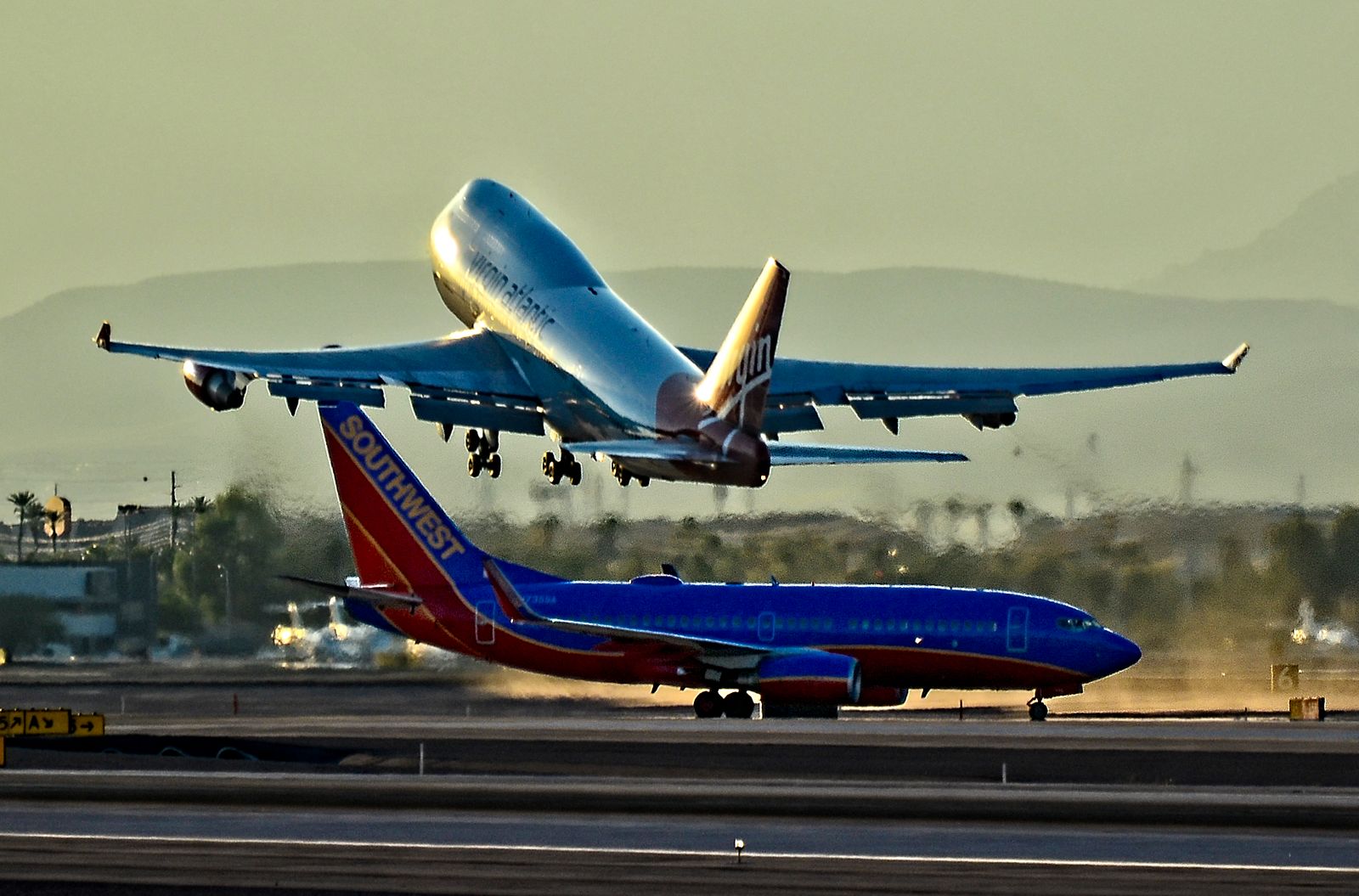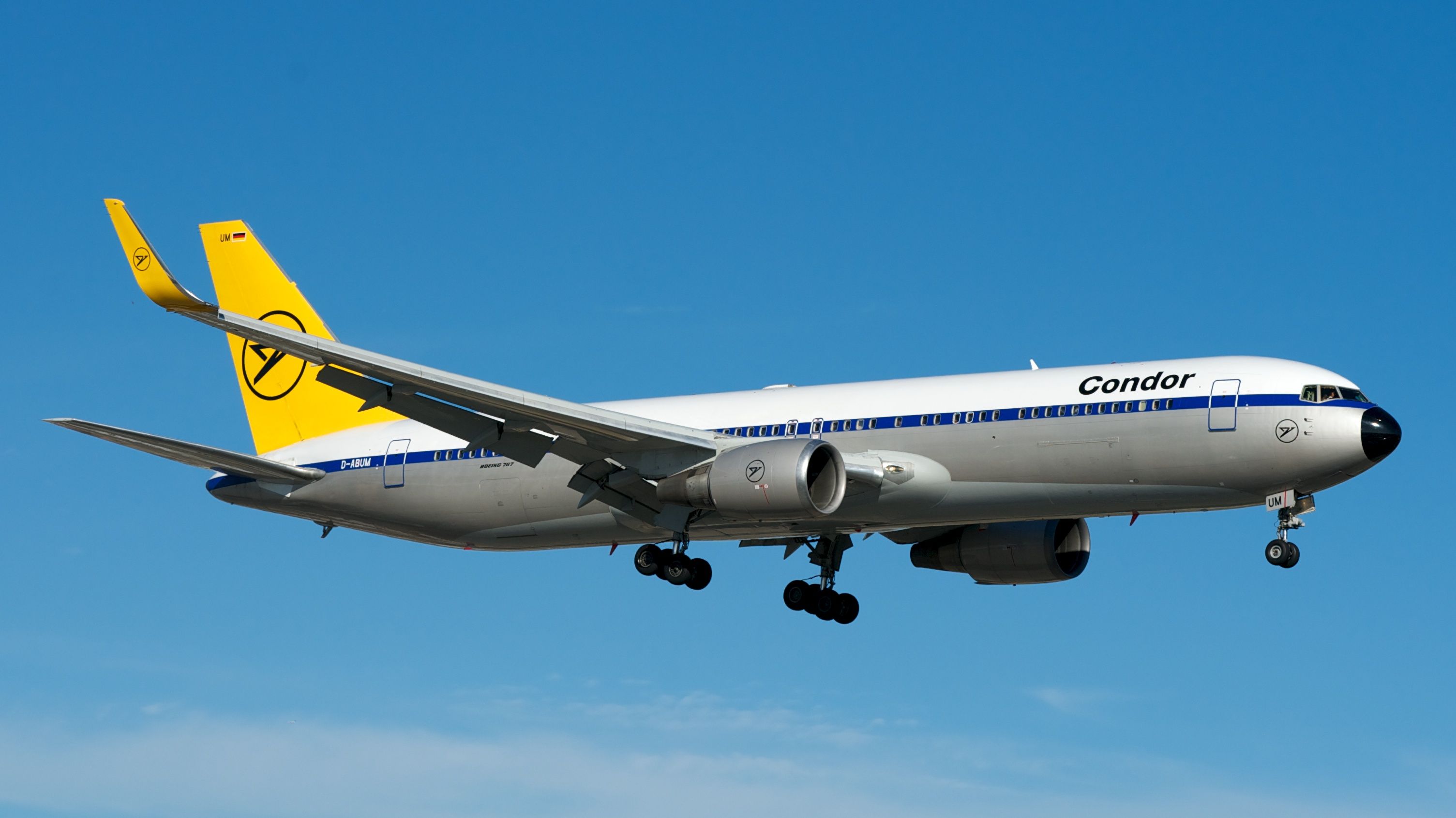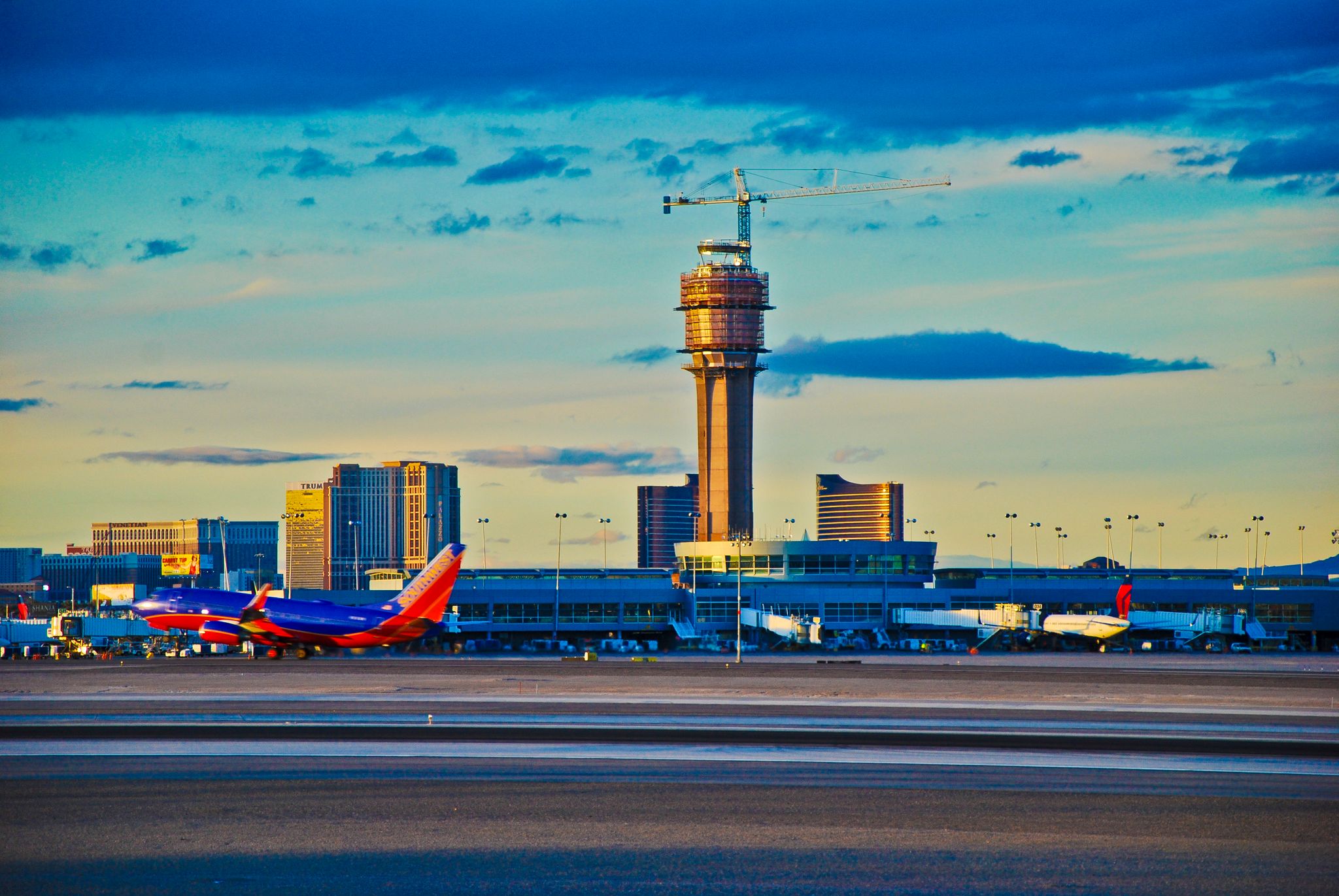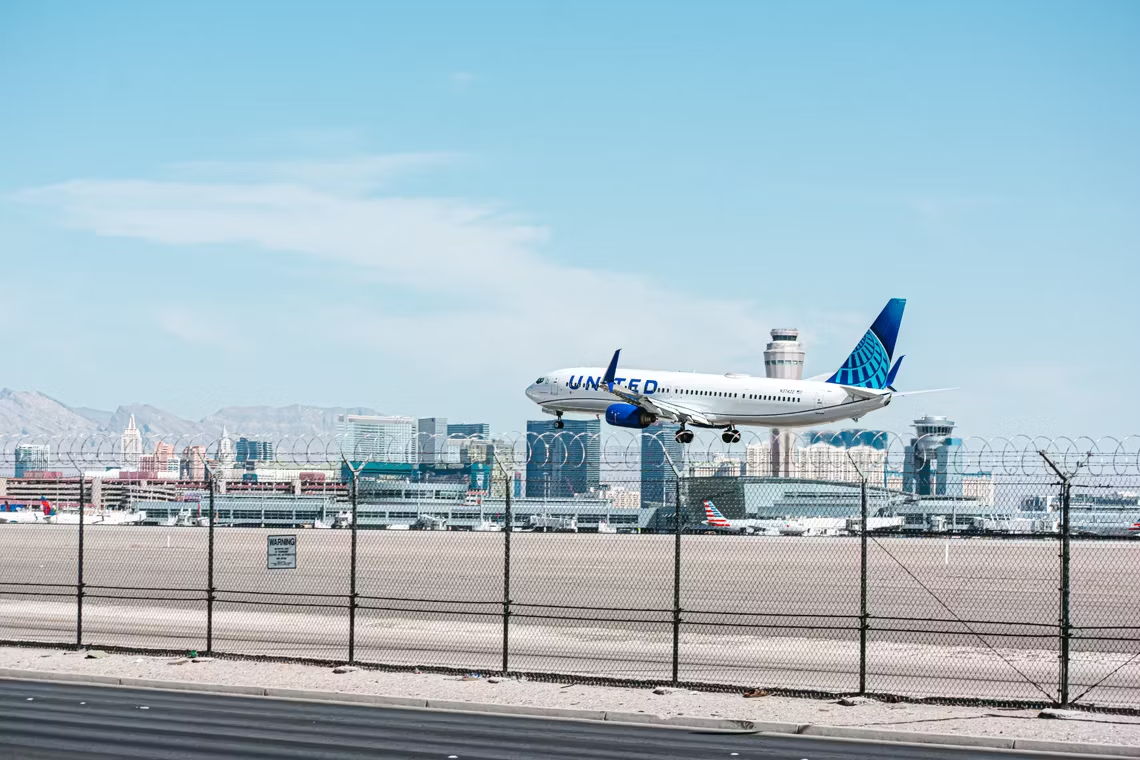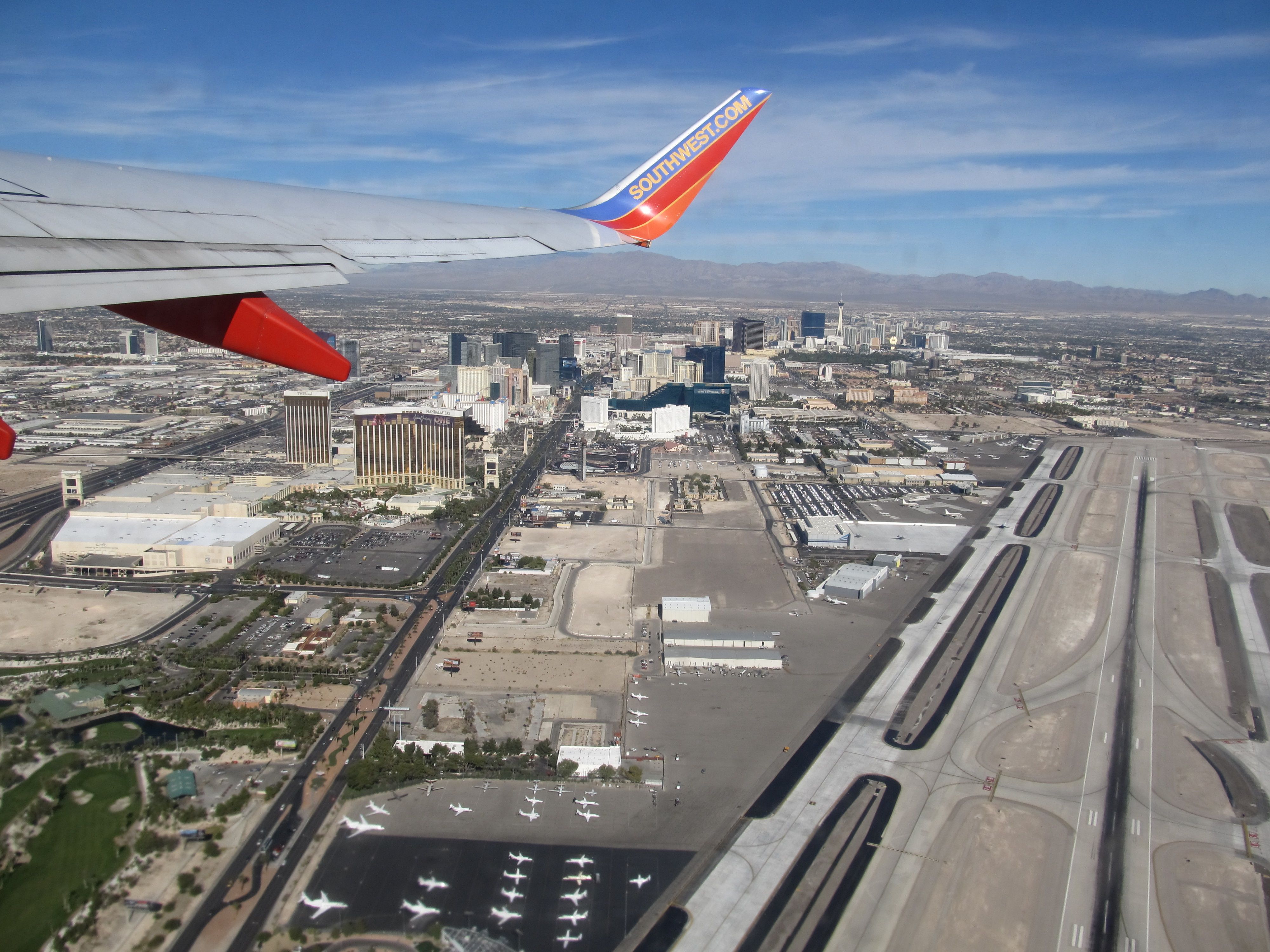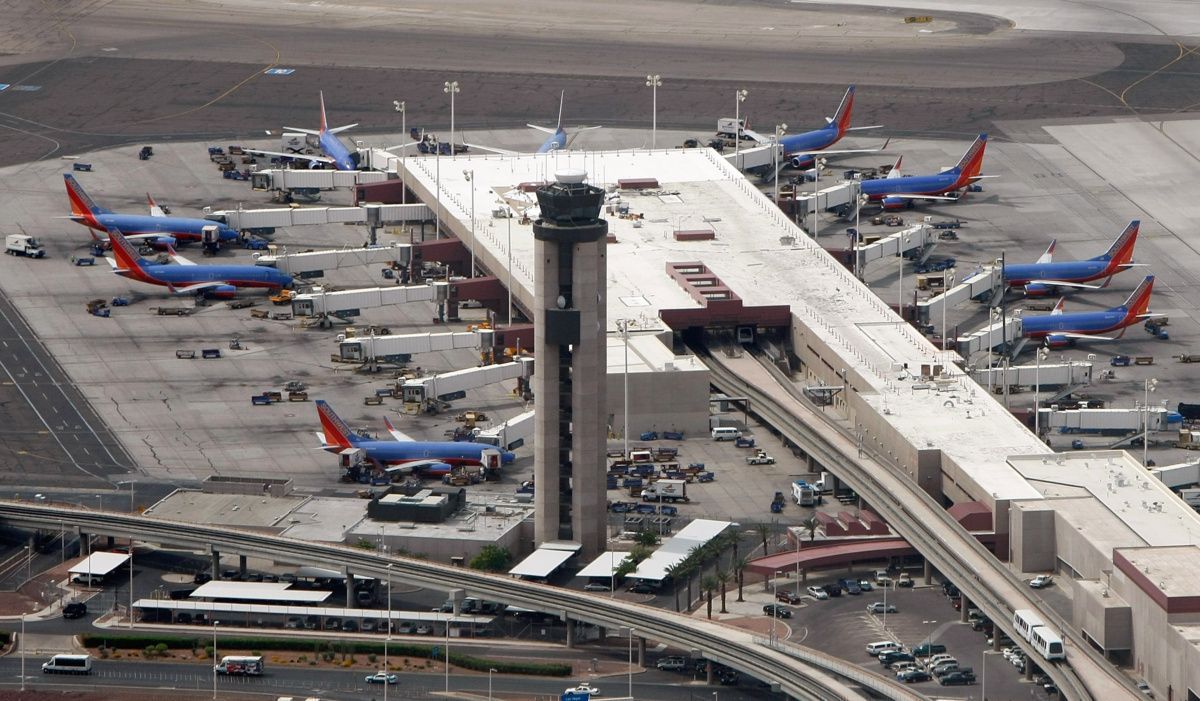Las Vegas Harry Reid International Airport is located in Paradise, Nevada, covering 4.4 sq. mi (11 sq. km). The airport services the Las Vegas Valley, roughly 5 miles (8 km) south of Downtown Las Vegas, supported by two passenger terminals and four runways. It is the focus city for seven airlines, including Frontier Airlines, Southwest Airlines, and Spirit Airlines. In 2022, the airport welcomed over 52 million passengers – the highest in its history.
The airport was once called McCarran Field
The first iteration of Harry Reid International Airport was built on an airfield that was once known as Anderson Field, which opened in 1920. Over the next decade, ownership changed hands several times before Clark County city decided to buy the land and build a more modern terminal.
In 1941, it was named McCarran Field after Nevada Senator Pat McCarran, who helped obtain federal funding for the purchase of the land and construction of the terminal. Senator McCarran also helped establish a gunnery school for the United States Army Air Corps there.
Then, in the following year, aviator George Crockett established Alamo Field south of Las Vegas, where the current Harry Reid International Airport is situated. When the U.S. Army decided to open a base at McCarran field, Clark County acquired Alamo Field and made it the new McCarran Field. In its first year, the airfield recorded over 36,000 passengers, with 12 departures a day, including five Trans World Airlines and two United Airlines flights.
Stay informed: Sign up for our daily and weekly aviation news digests.
Flying high with the high rollers
In the 1950s, when the Las Vegas casino industry started booming, the airport began handling more passengers. In 1959, it served 959,601 passengers, with 47 departures on weekdays. And in September 1960, United Airlines commenced jetliner operations from the airport using Boeing 720s.
To meet the growing demand, a new terminal was built on Paradise Road – it opened on March 15, 1963. Five years later, McCarran Field became McCarran International Airport. Further expansion was undertaken between 1970 and 1974, and by 1979, there were 14 airlines at the airport – twice the number in 1978, following the deregulation of the airline industry. Once again, an expansion plan was launched. This included an esplanade, larger baggage claim facilities, a parking garage, more gates, and the introduction of a people mover system.
Becoming a gateway to the world
In 1991, Terminal 2 (then named the Charter/International Terminal) opened to international traffic, along with an additional parking garage and tunnel linking the airport to the Las Vegas Beltway. Following this, the airport’s focus shifted to attracting foreign airlines.
Get all the latest aviation news for North America here.
German leisure airline, Condor, introduced its inaugural scheduled transatlantic flight in November 1996, linking Las Vegas to Cologne/Bonn. Then, in the summer of 1998, Northwest Airlines launched the first service between Las Vegas and Asia, flying to Tokyo on the Boeing 747.
In optimizing efficiency and improving passenger experience, innovative enhancements were adopted, such as:
- Common Use Terminal Equipment (CUTE) in 1997: McCarran International Airport was the first airport in the country to introduce shared use of ticket counters and gates, instead of having separate facilities for each airline.
- Common-Use Self-Service (CUSS) kiosks in 2003: These self-check-in kiosks allow passengers to check in and print boarding passes for any airline, as opposed to the previous airline-specific kiosks that led to congestion at ticket counters.
- Complimentary Wi-Fi in 2005: When it was first introduced, the airport’s free Wi-Fi zone (1.7 million square feet / 160,000 square meters) was the largest among US airports.
In 2012, a third terminal was built. Terminal 2 was subsequently made redundant and demolished in 2016. Today, the airport comprises Terminal 1 and Terminal 3 (for international flights).
Harry Reid International Airport
In early 2012, several elected officials called for the airport to be renamed, citing antisemitic and racist actions and comments previously made by the late Senator McCarran. One such official was Nevada Senator Harry Reid. While years passed without any changes being made, the murder of George Floyd (and the nationwide protests that followed) helped regain momentum for the name change.
Thus, on December 14, 2021, the airport was officially renamed Harry Reid International Airport. Unfortunately, Reid was terminal ill by then and could not attend the renaming ceremony in person. Just two weeks after the airport was renamed, he passed away at age 82.
2022: the biggest year yet
In 2022, Harry Reid International airport handled 49.1 million domestic passengers (a 28.7 per cent increase from the year prior), 2.5 million international passengers (a 234.9 per cent increase), and close to 1 million passengers (29.5 per cent increase) in general aviation services. The total of these figures is a record-breaking milestone – the largest volume of traffic ever handled in the airport’s history.
Most notably, Southwest Airlines flew 18 million passengers to Las Vegas in 2022, a 29.4 per cent year-on-year increase. It is set to have the most flights to Las Vegas in its 55-year history by March this year. Another airline that experienced significant growth at the airport was ultra-low-cost carrier Spirit Airlines, which saw a 54.2 per cent increase in passengers carried to Las Vegas.
In the international scene, Canadian discount carrier WestJet and flag carrier Air Canada brought the most international passengers to Las Vegas, collectively recording over 1 million passengers. Harry Reid International Airport’s dominant Asian air carrier, Korean Air, served 30,610 passengers from Seoul in 2022.
Rosemary Vassiliadis, Aviation Director of Clark County, said:
“We are no longer talking about an air travel recovery at Harry Reid International Airport; this is undeniably a period of growth that we expect will continue in 2023”
Harry Reid International Airport is expected to reach its maximum capacity of 63 to 65 million passengers – faster than expected – by 2030.
Love aviation history? Discover more of our stories here.
Source: Las Vegas Review-Journal


